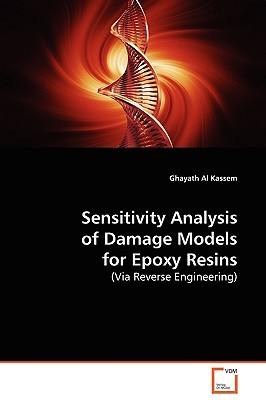
- We will send in 10–14 business days.
- Author: Ghayath Al Kassem
- Publisher: VDM Verlag
- ISBN-10: 3639132432
- ISBN-13: 9783639132434
- Format: 15.2 x 22.9 x 0.7 cm, softcover
- Language: English
- SAVE -10% with code: EXTRA
Sensitivity Analysis of Damage Models for Epoxy Resins (e-book) (used book) | bookbook.eu
Reviews
Description
The parameters for damage models are determined via a reverse engineering approach. The temporal development of the damage is simulated with cyclic tension-compression tests, and the parameters of the model are identified by the matching between experiment and simulation. Moreover, an analysis of sensitivity for the relation between model parameters and damage evolution is to be examined. In addition, a design of experiment (DoE) is accomplished using the programs Ideas, Abaqus, OptiSLang and Cornerstone. The following are the three operational joints: -Background, 1. Damage mechanics 2. Experimental methods to determine the material -parameters, 1. Evaluation methods for cyclic fatigue tests 2. Software (IDEAS, ABAQUS, OptiSLang, Cornerstone) 3. Models and their implementations -Computations, 1. Selection of the material models 2. Planning DoE (Cornerstone) 3. Executing DoE (OptiSLang, ABAQUS) 4. Analyzing DoE (Cornerstone, OptiSLang) -Evaluation, 1. Models Suitability for reverse engineering approach 2. Parameter identification strategies improvement 3. Formulation of alternative models and/or extension of the experimental database.
EXTRA 10 % discount with code: EXTRA
The promotion ends in 17d.06:31:39
The discount code is valid when purchasing from 10 €. Discounts do not stack.
- Author: Ghayath Al Kassem
- Publisher: VDM Verlag
- ISBN-10: 3639132432
- ISBN-13: 9783639132434
- Format: 15.2 x 22.9 x 0.7 cm, softcover
- Language: English English
The parameters for damage models are determined via a reverse engineering approach. The temporal development of the damage is simulated with cyclic tension-compression tests, and the parameters of the model are identified by the matching between experiment and simulation. Moreover, an analysis of sensitivity for the relation between model parameters and damage evolution is to be examined. In addition, a design of experiment (DoE) is accomplished using the programs Ideas, Abaqus, OptiSLang and Cornerstone. The following are the three operational joints: -Background, 1. Damage mechanics 2. Experimental methods to determine the material -parameters, 1. Evaluation methods for cyclic fatigue tests 2. Software (IDEAS, ABAQUS, OptiSLang, Cornerstone) 3. Models and their implementations -Computations, 1. Selection of the material models 2. Planning DoE (Cornerstone) 3. Executing DoE (OptiSLang, ABAQUS) 4. Analyzing DoE (Cornerstone, OptiSLang) -Evaluation, 1. Models Suitability for reverse engineering approach 2. Parameter identification strategies improvement 3. Formulation of alternative models and/or extension of the experimental database.


Reviews